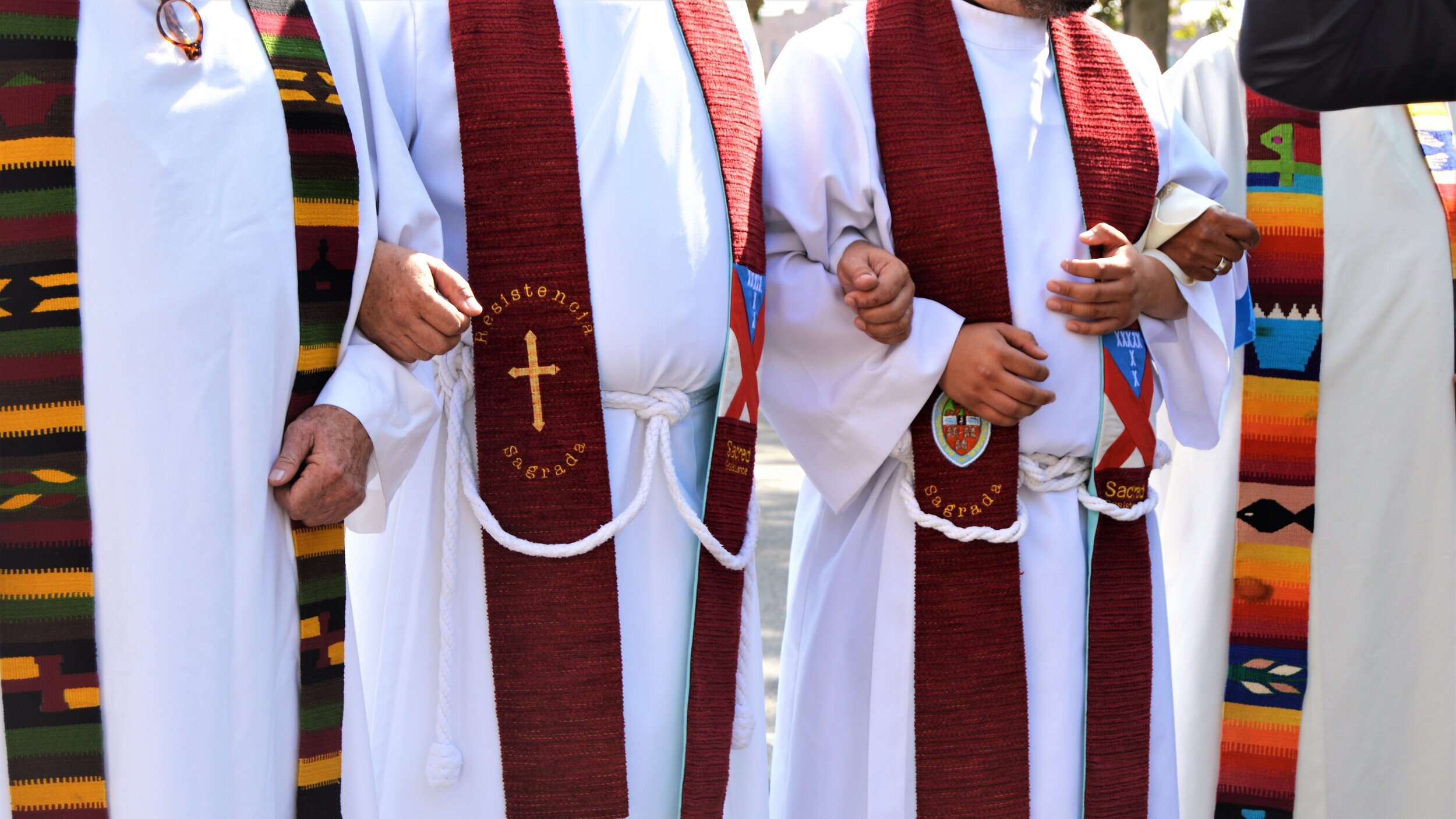
But let justice roll down like waters…
righteousness like an ever-flowing stream.
| Amos 5:24
Our Story
The Beginning
(2016)
On December 3, 2016, the Episcopal Diocese of Los Angeles adopted a resolution declaring itself a "Sanctuary Diocese" in response to rising threats against immigrant and refugee communities. This historic declaration called on congregations and institutions to serve as places of welcome, refuge, and healing for those targeted by hate due to any perceived status of difference.
Taking Action
(2017-2018)
The Sacred Resistance Task Force was formed in 2017, co-chaired by Rev. Jaime Edwards-Acton and Rev. Francisco Garcia. Key early actions included the 2018 "Faith Caravan" to El Barretal migrant shelter in Tijuana, where Bishop John Harvey Taylor joined clergy and advocates to provide aid and witness conditions at the largest asylum shelter.
In December 2018, our Diocesan Convention expanded our mandate to engage the broadest possible audience in education, advocacy, service, and action on behalf of anyone scapegoated or marginalized by government policies.
Sacred Resistance 2.0
(2024-Present)
Following the 2024 General Election, with its threats of mass deportations, attacks on transgender communities, and elimination of reproductive healthcare access, the Sacred Resistance Task Force "rebooted" for the work ahead. We launched Sacred Resistance 2.0 in December 2024 with renewed energy and expanded leadership.
Sacred Resistance 2.0 represents both an evolution and an expansion of our mission. The new landscape demands a broader coalition capable of defending multiple fronts simultaneously. The "2.0" designation reflects our commitment to building more robust infrastructure, deepening our community partnerships, and developing rapid-response capabilities that can adapt to an increasingly volatile political environment.
Grant, O God, that your holy and life-giving Spirit may so move every human heart, that barriers which divide us may crumble, suspicions disappear, and hatreds cease; that our divisions being healed, we may live in justice and peace; through Jesus Christ our Lord.
Amen.
FAQs
-
A. One of the core promises of our baptismal covenant is to “persevere in resisting evil.” We understand that as a call to stand in resistance to the systemic evils that oppress and marginalize any member of our human family – including but not limited to racism, sexism, nativism, homophobia, anti-Semitism and Islamophobia. Grounded in our baptismal promises, our resistance to public policies that perpetuate those evils is how we put our faith into action in the world.
-
A. Multiple policies are being implemented simultaneously—a shock and awe approach that impacts our communities across all different circumstances and statuses. In response, Sacred Resistance has been organizing, reorganizing, and expanding our work to support families in various situations.
Our comprehensive approach spans from pastoral care to direct accompaniment, from organizing and coalition building to direct action with interfaith partners. We accompany people to court hearings and ICE check-ins, bearing witness throughout these experiences.
Because we serve a diverse and extensive diocese covering wide terrain, 2.0 represents our understanding of how to operationalize grassroots activity across the entire diocese—recognizing that this work is happening everywhere simultaneously.
-
There are multiple opportunities to get involved with the Sacred Resistance movement.
Sign up for our Action Alerts
Make a tax-deductible donation
Apply to become a volunteer
Join an action with our allies
-
A. A sanctuary diocese is a designation that reflects a commitment to providing a safe and supportive environment for individuals and communities in need, particularly those who are marginalized or vulnerable. This term often refers to the practice of offering protection and resources to immigrants, refugees, and others facing persecution or injustice. Within a sanctuary diocese, faith-based organizations and congregations work collaboratively to create inclusive spaces, advocate for social justice, and ensure that the rights and dignity of all individuals are upheld. The ethos of a sanctuary diocese is rooted in compassion, solidarity, and a shared responsibility to care for one another, embodying the values of faith and community in the face of adversity.
-
A. Being in the U.S. without proper documents is a civil offense, not a criminal one. It is simply not a crime to be undocumented and describing any immigrant as “illegal” is legally inaccurate. In becoming a Sanctuary Diocese we join with the growing number of cities, colleges and communities of faith declaring themselves sanctuaries and stand ready to challenge the unjust targeting of immigrant members of our communities.
-
A. The resolution explicitly calls for resistance to policy proposals to target and deport millions of undocumented immigrants and to eliminate the Deferred Action for Childhood Arrivals (DACA) program. It further calls for connecting with other local and national sanctuary communities and institutions, immigrant rights groups and coalitions, and engaging in educating, organizing, advocacy, and direct action, and other methods as deemed appropriate in each context, to ensure the safety and security of those targeted due to immigration status.
It urges congregations and institutions to discern how they are called to serve as places of welcome, refuge, healing, and offer forms of material and pastoral support for those targeted by hate for any perceived status of difference and that we work alongside our friends, families, and neighbors to ensure the dignity and human rights of all people – by sacred resistance when necessary.
-
If it comes to that, we expect that there will be congregations which would choose to live into the resolution by providing physical sanctuary. Others will provide a broad range of support including legal assistance, material support and pastoral care.
The Resolution
Episcopal Diocese of Los Angeles Resolution Regarding Becoming a Sanctuary Diocese
Resolved, that the One Hundred Twenty-first Annual Meeting of the Church in the Diocese of Los Angeles declares the Diocese of Los Angeles to be a Sanctuary Diocese; and be it further
Resolved, that the Diocese of Los Angeles, as people of faith and people of conscience, pledges to resist the stated policy proposals of the newly elected Trump administration to target and deport millions of undocumented immigrants, and to eliminate the Deferred Action for Childhood Arrivals (DACA) program that has granted temporary relief for thousands of young people in our communities and families; and be it further
Resolved, that the congregations and institutions of the Diocese of Los Angeles consider
becoming Sanctuary Congregations and Institutions, serving as places of welcome, refuge, healing, and other forms of material and pastoral support for those targeted by hate due to immigration status or some perceived status of difference, and that we work alongside our friends, families, and neighbors to ensure the dignity and human rights of all people; and be it further
Resolved, that the Diocese of Los Angeles connect with other local and national sanctuary communities and institutions, immigrant rights groups and coalitions, and engage in educating, organizing, advocacy, and direct action, and other methods as deemed appropriate in each context, to ensure the safety and security of the undocumented community; and be it further
Resolved, that the Diocese of Los Angeles assist in equipping congregations, clergy and lay leaders to engage in such work, appropriate to local contexts, capacity, and discernment.
Explanation
For many years, immigrant families have suffered on the margins of our society. They have been scapegoated during difficult economic times and victimized by harsh anti-immigrant ordinances passed by some states and localities.
In the aftermath of the recent presidential election there is heightened concern that the
campaign rhetoric villainizing immigrants will become policy targeting them because of their immigration status or religious beliefs.
As a people of faith committed to dismantling oppressive systems and building structures and communities that reflect God’s compassion and justice, we must do nothing less than make straight a highway in the desert for our sisters and brothers.
This resolution puts our faith into action by standing with the growing number of cities, colleges and communities of faith declaring themselves places of welcome, refuge, healing, for those targeted by hate due to immigration status or some perceived status of difference as we work alongside our friends, families, and neighbors to ensure the dignity and human rights of all




